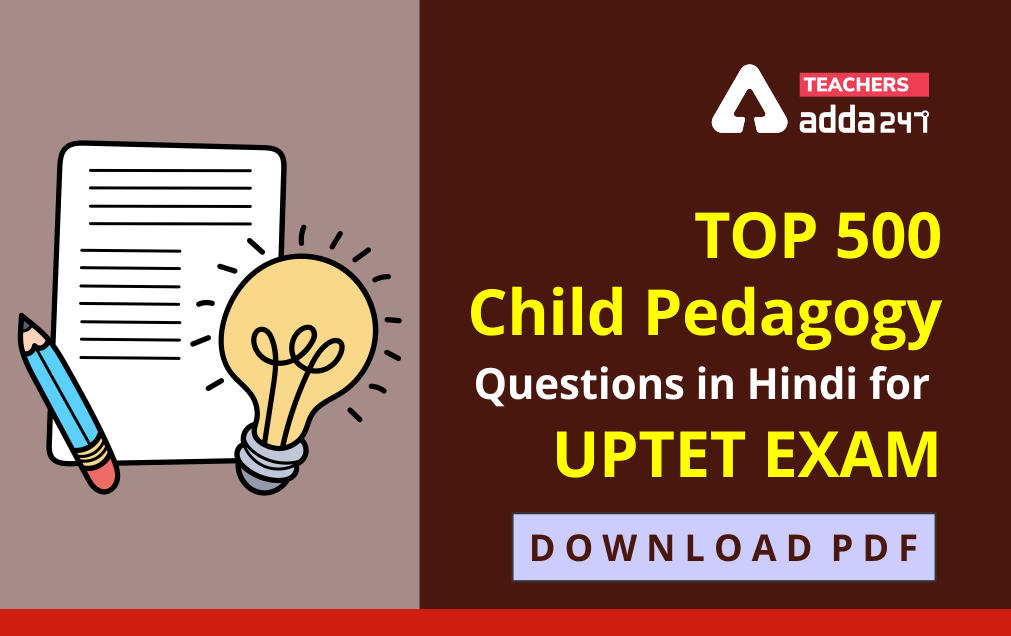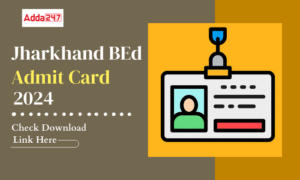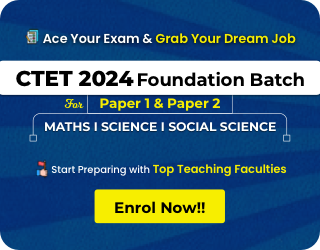Table of Contents
UPTET is the state-level exam conducted once a year for the recruitment of School teachers in the Uttar Pradesh state. Uttar Pradesh Basic Education Board (UPBEB) has released the notification regarding Uttar Pradesh Teacher Eligibility Test 2022 on the official website. UPTET Paper-I is conducted for candidates who plan to become teachers of Classes 1 – 5. On the other hand, UPTET Paper-II is for candidates who plan to become teachers of Classes 6 – 8. Child Development & Pedagogy comes in both papers i.e. Paper 1 & 2 of the UPTET exam. This section carries a weightage of 30 marks in each paper. This subject helps teachers to understand the educational psychology of child which is required for teaching and learning in the classroom. These Child Pedagogy Questions in Hindi PDF are the best for UPTET and CTET exams.
Highlights of Child Pedagogy Section:
- Compulsory Section for all candidates.
- Total Questions – 30 questions (in each paper)
- Total Marks – 30 marks (in each paper)
- Negative Marking – No
- Language- Bilingual
- Question Pattern – Objective Type Questions
- Difficulty level for CTET Paper 1 : Upto 8th Class
- Difficulty level for CTET Paper 2 : Upto 10th Class
- Content of Paper I & II : Child Development , Concept of Inclusive education and understanding children with special needs & Learning and Pedagogy.
- Examination pattern of Child Development and Pedagogy : based on primary level for Paper I and upper primary level for Paper II.
- Content Weightage: Child Development -15 marks, Concept of Inclusive education and understanding children with special needs -5 marks & Learning and Pedagogy-10 marks.
UPTET 2020-21: Important Topics Asked In UPTET 2021 Exam [Subject wise]
UPTET Exam Pattern 2021
- UPTET paper 1 sections – Child Development and Methodology and Pedagogy, Language 1 (Hindi), 2nd Language (Any one from English, Urdu & Sanskrit), Mathematics and Environmental Studies
- UPTET Paper 2 Sections – Child Development and Methodology and Pedagogy, Language 1 (Hindi), 2nd Language (Any one from English, Urdu & Sanskrit), Mathematics and Science / Social Science
- Total Question – 150 (30 questions from each section)
- Total Marks – 150 (30 questions from each section)
- Total Duration – 2 hours 30 minutes.
UPTET 2021 Exam Date Out; Check Eligibility Criteria, Exam Pattern Syllabus HERE
Exam Pattern for UPTET Paper-1
| Sections | Number of Questions | Total Marks | Duration |
|---|---|---|---|
| Child Development and Methodology and Pedagogy | 30 | 30 | 2 hour 30 minutes |
| Language 1 (Hindi) | 30 | 30 | |
| 2nd Language (Any one from English, Urdu & Sanskrit) | 30 | 30 | |
| Mathematics | 30 | 30 | |
| Environmental Studies | 30 | 30 | |
| Total | 150 | 150 |
UP TET 2021 Syllabus and Exam Pattern
Exam Pattern for UPTET Paper-2
| Sections | Number of Questions | Total Marks | Duration |
|---|---|---|---|
| Child Development and Methodology and Pedagogy(Compulsory) | 30 | 30 | 2 hour 30 minutes |
| 1st Language (Hindi) | 30 | 30 | |
| 2nd Language (Any one from English, Urdu & Sanskrit) | 30 | 30 | |
| a. Mathematics & Science b. Social Studies/ Social Science | 60 | 60 | |
| Total | 150 | 150 |
CDP Most Important Question
Q1. Which agent of socialization has the most impact on our development?
(a) Education
(b) Family
(c) Mass Media
(d) Peer Groups
Ans.(b)
Q2. Socialisation is significant because _________________.
(a) it ensures that we are bound by the rules of society
(b) it allows us to overcome our innate biological instincts
(c) it facilitates the learning of male and female roles in society
(d) it shapes our identity and self
Ans.(d)
Q3. What are some of the Home influences that contributes to sex differences in ability?
(a) Parental Expectations, Contributions of boys and girls, Children externalise parents’ view
(b) Parental Expectations, Contributions of boys only, Children internalise parents’ view
(c) Parental Expectations, Attributions of boys and girls, Children internalise parents’ view
(d) Parental Expectations, Attributions of boys and girls, Children externalise parents’ view
Ans.(c)
Q4. What are some implications for Teachers?
(a) Teachers should assume that girls and boys are not interested in an activity that may be typically associated with 1 gender or the other
(b) Offer a wide range of toys that expose children to diverse gender roles
(c) Develop classroom messages that emphasises gender stereotyping languages
(d) Offer a wide range of toys, books and games that expose children to diverse gender roles
Ans.(d)
Q5. Om Prakash, a teacher of class 10, involves his students in various group activities. This process will facilitate the student’s learning and also help in
(a) socialisation.
(b) value education.
(c) aggression.
(d) individualisation.
Ans.(a)
Q6. Raman is an economically deprived child in your class and he is generally not seen to be very active. What will you do to make him participate in all activities that take place in class?
(a) You will show examples of other learners who are doing well and assure Raman that the can also do well if he makes an effort.
(b) You will insist that he has to participate since you have high expectations of him.
(c) You will do nothing and think he will join later.
(d) You will scold him for his non-participatory behaviour.
Ans.(a)
Q7. What is the meaning of socialisation with reference to education?
(a) Rejecting social norms
(b) Adaptation and adjustment with social environment
(c) Simply following social norms
(d) Developing social norms
Ans.(b)
Q8. Learners should be encouraged to interact with peers so that
(a) the course can be completed early.
(b) the teacher can control the class.
(c) learners acquire cooperative learning and social skills.
(d) learners can get to know each other.
Ans.(c)
Q9. School textbooks socialise you through
(a) content.
(b) exercises.
(c) examples.
(d) All of the above
Ans.(d)
Q10. Ramit is a teacher of class 6 and always wants his students to come to class regularly on time and do their work properly. Ramit should
(a) model his behaviour on the same lines as what he is expecting from his learners.
(b) scold learners for inappropriate work
(c) punish learners for late coming.
(d) complain to the principal about his student’s behaviour.
Ans.(a)
Q11. Which of the following statements is true?
(a) Unlike other animals, human infants are born with a culture.
(b) Human infants come into the world ready to learn a culture but are not born with one.
(c) Socialization is another word for acculturation.
(d) b and c
Ans.(b)
Q12. The general process of acquiring culture is referred to as _____________ .
(a)socialization
(b)culture
(c)semi culture
(d)none of the above
Ans.(a)
Q13. Which of the following things is normally learned during the socialization process?
(a)the roles we are to play in life
(b)the culture’s norms
(c)the language of the people around us
(d)all of the above
Ans.(d)
Q14. Which of the following statements is true?
(a)Socialization plays no part in personality formation in individuals.
(b)Large-scale complex societies that are not culturally homogenous usually have unanimous agreement about what should be the shared norms.
(c)Successful socialization can result in uniformity within a society.
(d)b and c
Ans.(b)
Q15. Individuals who have not been socialized in the same way as the majority of people are often considered by their society to be __________________ .
(a)mentally ill
(b)abnormal or odd
(c)deviant
(d)all of the above
Ans.(d)
Q16. When does socialization begin?
(a)at the time when an individual is conceived or within the first few weeks following conception
(b)at birth or shortly thereafter
(c)on entering nursery school or kindergarten
(d)when children reach puberty and are able to understand the reasons for society’s rules
Ans.(b)
Q17. Which of the following is true of socialization?
(a)Early childhood is the period of the most intense and the most crucial socialization.
(b)Socialization continues until we are adults and then usually stops because we have learned our culture by that time.
(c)All cultures use the same techniques to socialize their children.
(d)None of the above
Ans.(a)
Q18. Who is mostly involved directly in the socialization of children around the world?
(a)adult men 20-40 years of age
(b)grandparents
(c)women and girls
(d)all of the above
Ans.(c)
Q19. As a result of Margaret Mead’s 1950’s study of socialization practices in six different societies, she concluded that _____________________________ .
(a) Socialization practices vary markedly from society to society.
(b) Socialization practices are generally similar among people of the same society.
(c) both of the above
(d) none of the above
Ans.(c)
Q20. The repetitive practicing of basic skills by an individual is an example of which kind of educational method?
(a) formal
(b) informal
(c) technical
(d) none of the above
Ans.(b)
Q21. The language skills that cannot be assesses through a traditional pen-paper test are.
(a) Listening and speaking
(b) Reading and speaking
(c) Writing and listening
(d) Reading and listening
Ans.(a)
Q22. Pre-reading tasks are meant for
(a) Evaluating the reading skill of the learners
(b) Giving the meanings of difficult words and phrases
(c) Introducing the main idea and motivating the learners
(d) Explaining the grammatical items used in the reading text.
Ans.(c)
Q23. When a teacher asks her students to write a letter after having a group discussion, she is
(a) Adopting the direct method of language teaching
(b) Integration different language
(c) Following traditional method
(d) Likely to confuse the students.
Ans.(b)
Q24. Speaking skill can be best developed by enabling the learners to.
(a) Read challenging and difficult text
(b) Communicate in real life situations
(c) Listen to the model provided by the teacher
(d) Avoid all errors while speaking
Ans.(b)
Q25. Teaching grammar is useful to improve
(a) Accuracy
(b) Fluency
(c) Literacy
(d) Numeracy
Ans.(a)
Download Top 500 Child Pedagogy Questions in Hindi PDF
You may like to know :
- UPTET 2020: UPTET Exam Notification, Syllabus, Exam Pattern
- How To Score 60 % In The UPTET 2021 Exam?
- UPTET Teacher Salary 2020



 TN TRB Assistant Professor Notification ...
TN TRB Assistant Professor Notification ...
 TN TRB Assistant Professor Cut Off 2024 ...
TN TRB Assistant Professor Cut Off 2024 ...
 Jharkhand BEd Admit Card 2024, Direct Do...
Jharkhand BEd Admit Card 2024, Direct Do...








